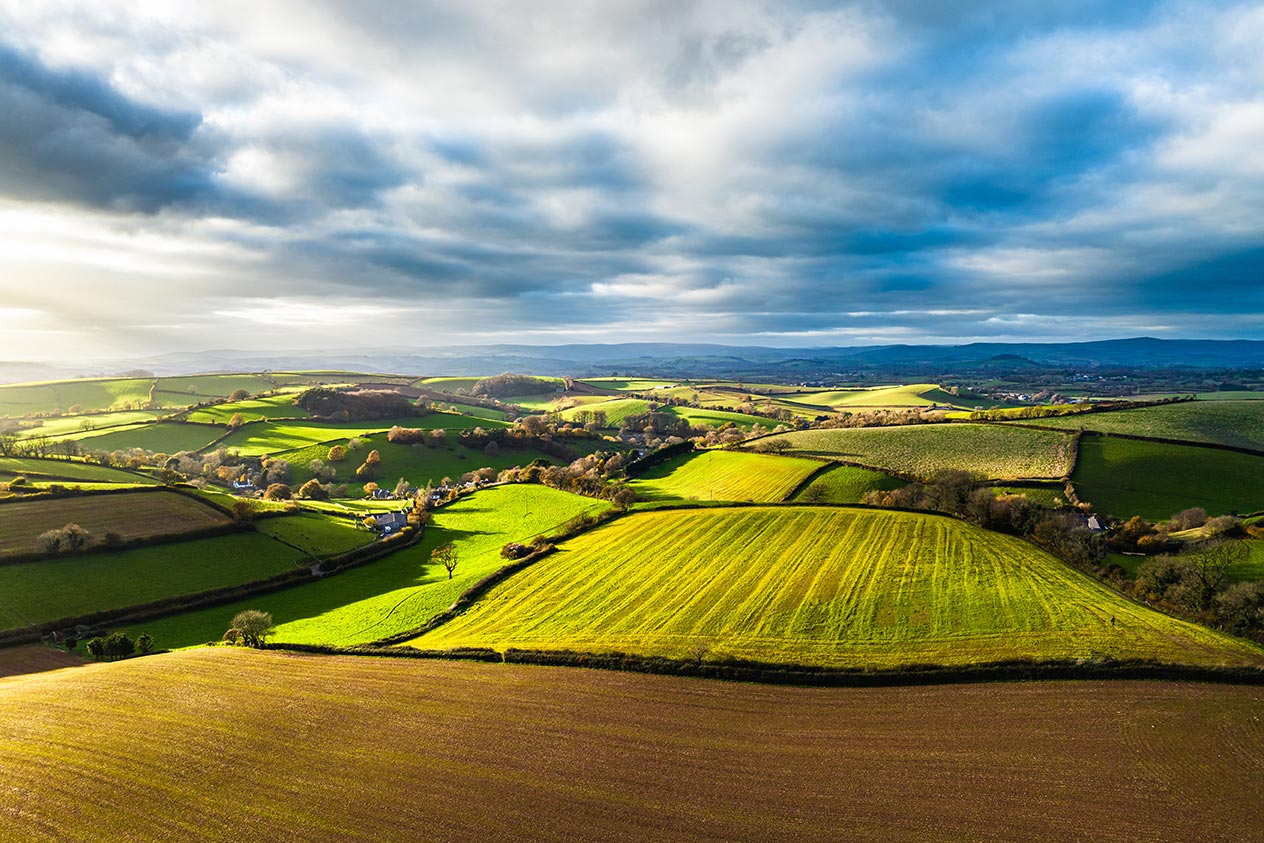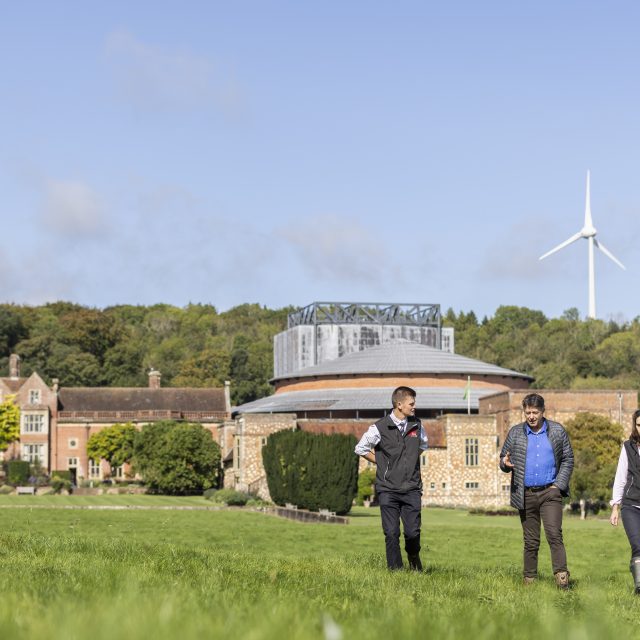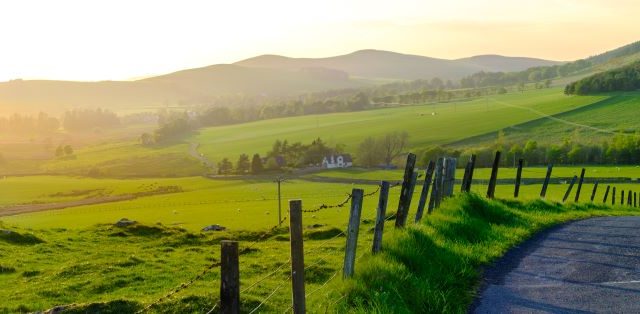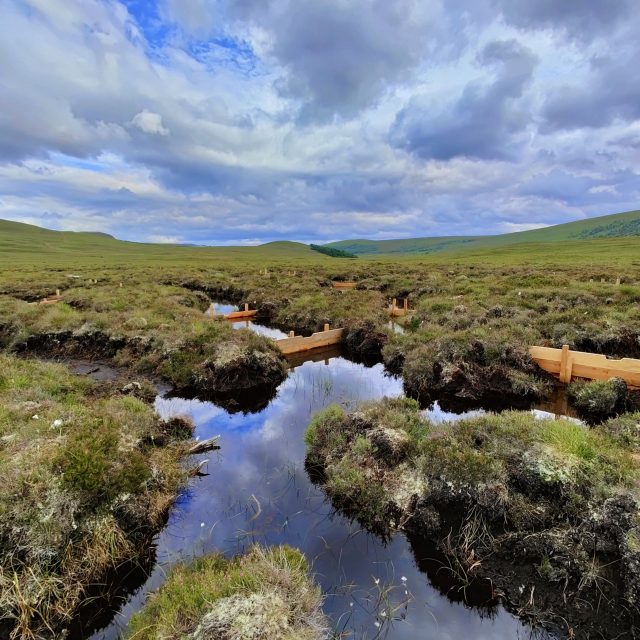In the know: 11 common questions about SFI answered
The Sustainable Farming Incentive (SFI) scheme, which is an agri-environmental scheme available to all farmers in England, has been through multiple revisions since it was first piloted in 2022.
The latest of these is an expanded 2024 offer, which builds on the 2023 version of the scheme but introduces new options focused on precision farming, flood mitigation, climate change resilience, agroforestry and the uplands.
The expanded offer is scheduled to open offically for applications by the end of July, although some applications are being processed ahead of that through a controlled rollout process.
Strutt & Parker’s specialist Farming team is working with clients to establish how different packages of SFI actions can be used to best effect to build financial and environmental resilience within a business.
There are some good opportunities to integrate options within the farming rotation that deliver a fixed income, largely irrespective of the weather, with a much lower working capital requirement. However, choosing the right options for your system takes careful planning.
Here are answers to some of the common questions we are being asked:
- 1: What’s changed in the 2024 offer?
The number of actions from which farmers can choose has been expanded from 23 to 102.
This increase is partly because a range of new actions have been added, and partly because actions previously available through the Countryside Mid-Tier scheme have been rolled into SFI to simplify the application process for farmers.
Some of the most interesting new actions which have been added include:
| Option Code | Option | Payment Rate |
| SOH1 | No-till farming | £73/ha |
| SOH4 | Winter cover following maize crops | £203/ha |
| BND1 | Maintain dry stone walls | £27 per 100m for both sides |
| AHW8 | Whole crop spring cereals and overwinter stubble | £596/ha |
| UPL2 | Low livestock grazing on moorland | £53/ha |
| PRF1 | Variable rate application of nutrients | £27/ha |
Another significant change is that the scheme is now open to new entrants. To date, it has only been open to people who had previously made a Basic Payment Scheme claim.
- 2: Is the 2024 offer better than the 2023 one?
The Mid-Tier stewardship is discontinued in 2024 with many of the options now rolled into the new SFI. Overall, it means the scheme looks much more like Mid-Tier than the original SFI 2022.
The scheme has improved as a whole, with a broader range of options available. This means there are more opportunities for a wider range of farmers. The reduced length of most options from five to three years will allow flexibility and support tenants on short-term contracts.
However, farmers will need to be alert to changes to option prescriptions – for example in the 2023 scheme legume fallow (NUM3) was rotational, but in the 2024 offer it is non-rotational (the code has also changed to (CNUM3). There can also be complexity between how different options can be layered or ‘stacked’ on top of each other.
- 3: What are some of the most popular options?
Analysis of the actions chosen by farmers with a 2023 agreement showed the top three popular choices were as follows (the % shows our estimate of the proportion of farms taking up the action):
| Cropping farms | Lowland grassland farms | Upland grassland farms |
| 54% IPM4 – No use of pesticide, nematicide or acaricide on arable crops and permanent crops | 85% LIG1 – Manage grassland with very low nutrient inputs (outside SDAs) | 85% LIG1 – Manage grassland with very low nutrient inputs (outside SDAs) |
| 29% AHL2 – Winter bird food on arable and horticultural land | 42% NUM2 – Legumes on improved grassland | 42% NUM2 – Legumes on improved grassland |
| 28% SAM2 – Multi-species winter cover crops | 23% IGL2 – Winter bird food on improved grassland | 23% IGL2 – Winter bird food on improved grassland |
Note: The codes used in the table relate to 2023 agreements and may have been updated under the 2024 offer.
The majority of SFI agreements also include at least one ‘agreement level plan’. For example, farmers who identify and discuss opportunities for using Integrated Pest Management (CIPM1) on their land and produce a written plan can qualify for an annual payment of £1,129/yr. A Nutrient Management plan (CNUM1) drawn up with the assistance of a FACTS-qualified advisor carries a payment of £652/yr.
Significant changes in the 2024 offer include new actions for precision farming and no-till farming. There is a payment of £27/ha available for the variable rate application of nutrients (PRF1) and £73/ha for no-till farming (SOH1). There is also a range of new moorland options, opening up opportunities that were unavailable to upland farmers in previous versions of the scheme.
- 4: Are there any top tips when it comes to choosing options?
Consider your objectives carefully. The increased range of available management options means there is much wider scope for achieving meaningful and rewarding environmental outcomes for the farm. However, for farming businesses relying on these payments for an improved level of income, it is important to consider the costs and management implications of your proposed scheme. The headline income figures for some options look very attractive but can be expensive to deliver. There are some options which are attracting less attention, for example, the establishment and maintenance of grassy field corners and blocks (CAHL3) where the payment is lower at £590/ha, but with lower management requirements after initial establishment.
The pick-and-mix nature of the SFI scheme means it can be tempting to try lots of different options, but this will lead to complexity in managing the agreement. It may be better to start off with a limited number of options.
Consider that if you are using SFI as a rotational tool, then you will need to plan out your rotation for the next three years to check how you are going to make it work practically.
Make sure you understand the record keeping requirements to show how you’ve completed each SFI action in your agreement. Every option requires some sort of evidence and some more than others. Evidence may include photographs and other documentation to show what you have done, including providing copies of associated invoices. This means thought will need to be given as to how you gather and store this information.
- 5: What sort of income could I generate from SFI?
Our analysis shows that farms with cropping are estimated to receive £22,096 in income on average from their SFI agreement, which is 45% of the Basic Payment that they received in 2020-22. It is a lower proportion for lowland grassland farms (42%) and for upland grassland farms (37%).
| Per farm | ||||
| All farms in England | Cropping farms | Lowland grassland farms | Upland grassland farms | |
| Average income from SFI (and per ha) | £379 m | £22,096 (£102) | £13,554 (£95) | £14,495 (£51) |
| Historical Basic Payment, 2020-22 average (and per ha) | £1,648 m | £49,166 (£226) | £32,281 (£227) | £39,472 (£138) |
| SFI payment as % of 2020-22 Basic Payment | 23% | 45% | 42% | 37% |
However, income from SFI agreements does not equate to profits as there are costs associated with carrying out many / all of the actions. This is different to Basic Payments, which was mainly profit for farmers as there were few / fewer costs associated with complying with Basic Payment rules.
- 6: Is it worth growing beans and oilseed rape anymore?
With commodity prices uninspiring and input prices still high, then lots of farmers are questioning whether to replace their low margin, high risk break crops with SFI options. The legume fallow and pollen and nectar options under the 2023 scheme were receiving lots of attention due to the ability to rotate, but these will be non-rotational for all 2024 schemes and, along with eight other options, are subject to a combined limit of 25% of the farm area so are less likely to be used. Some farmers may use management options to take a break from the lower margin crops, but you should consider the impact on the rotation as a whole and the ability to maximise farming returns in the longer term.
Flower rich grass margins or blocks (CIPM2), which is worth £798/ha, has also had a lot of interest due to the high payment rate, but it can be a high-risk option owing to the need to establish wildflowers, which can be difficult on fertile arable land. Careful and sometimes time-consuming management is often needed to prevent grasses and weeds taking over.
There are, of course, wider business considerations to factor into decision making such as the impact on fixed costs which will be spread over a smaller area. But an upside is that machinery can be run for longer.
Farmers with a Contract Farming Agreement can reduce their costs, but it will be advisable for any landowners reducing their cropped area, and therefore cutting down the contractor’s work, to approach it in a responsible way to maintain a good long-term relationship.
- 7: If I have an existing Mid-Tier, Higher Tier or HLS agreement what are my options?
Farmers with a CS Mid-Tier or HLS agreement will, from September 2024, be able to end the existing agreement early to apply for a SFI agreement.
They can end the existing agreement either:
- At the end of the current agreement year and receive the full payment due for that year (subject to meeting the requirements of the agreement).
- Before the end of the current agreement year, but not receive payment for the part of the current agreement year already completed
Farmers can choose what land and actions to include in the new agreement, subject to meeting the eligibility rules of the scheme. There will not be any requirements for the new agreement to be the same as or similar to the agreement being ended.
A new CS Higher Tier scheme will be opening this winter and, where eligible to apply for CS Higher Tier actions, specialist advice may be required through Natural England or the Forestry Commission.
If the existing agreement includes a Site of Special Scientific Interest (SSSI) or Scheduled Monument (SM), you’ll need to keep managing that land in line with the SSSI or SM requirements. You may be able to apply for funding to manage this land through SFI or CS Higher Tier.
If farmers have a CS Higher Tier agreement, they will only be able to close the existing agreement early by exception.
Where there is a CS Mid Tier or Higher Tier agreement that ends on 31 December 2024, it will be possible to apply for a SFI or CS Higher Tier agreement ahead of the agreement ending.
.
- 8: ‘Is there anything to stop me…?’
Plenty of conversations are starting with the words: ‘Is there anything to stop me …’
It is inevitable, as a new scheme, that people are trying to get their heads around what is and isn’t possible in order to maximise their claims.
One of the challenges in answering queries about how different options can be stacked and combined is that Defra has deliberately tried to be less prescriptive on how to manage options than in the past, with the aim of giving farmers greater flexibility. Instead, its focus is on achieving the environmental aims of the scheme.
So, when people ask ‘if the guidance doesn’t directly say I can’t do it, does it mean I can do it’ then the answer depends on whether you are confident you can do what you are proposing and reliably meet the aims of the scheme. If the answer is no, then you probably shouldn’t be doing it.
Another test of whether options can be combined on the same parcel will come at the point when you submit your application, will the computer system allow two options to be put on one field in one year?
- 9: What are the estimated costs attached to delivering some popular SFI options?
We’ve produced some standard costings for some popular SFI options to help farmers look at what the return might be.
For example, the herbal ley option (CSAM3) attracts a payment of £382/ha, of which we estimate there will be establishment costs in the first year of £291/ha (based on a seed cost of £204/ha). However, in the following years, providing it is used for grazing livestock there are unlikely to be any management or establishment costs.
The winter bird food option (CAHL2) attracts a payment of £853/ha, with an annual establishment and management cost of £310/ha, so the average return per year is £543/ha but this can increase if combined with CIPM3 (companion cropping) and CIPM4 (no use of insecticides).
- 10: Which of the options will produce the most positive outcomes for the environment?
Examining the local priorities for Countryside Stewardship can be helpful but you should consider the habitats on your farm carefully. For more impactful, long-term schemes it may be worth considering enlisting Natural England support and applying for a PA2 capital grant to fund a feasibility study that will help identify the specific actions to be adopted on your farm to achieve the best environmental benefits.
Existing habitats on the farm will be the most valuable in terms of biodiversity, so the key to maximising the impact of new SFI options environmentally is to identify what habitats you have and whether it is possible to expand or join them up.
One way of expanding them is looking at whether it is possible to buffer habitats. For example, if an arable field borders a woodland then a 12-24 metre strip of winter bird food (CAHL2) could buffer the woodland. The land adjacent to the woodland probably yields less than the centre of the field, due to shading, so this could be financially beneficial too.
Other options to consider include:
CIPM4 (No use of insecticide on arable crops and permanent crops). Insects form a large part of the diet of Section 41 species – classed as those of principal importance – such as skylarks and corn buntings.
CHRW2 (Manage hedgerows). Allowing hedgerows to increase in size strengthens corridors between habitats and provides more food for wildlife.
CAHL4 (4m to 12m grass buffer strip on arable and horticultural land). These are great at reducing soil erosion and pesticide pollution, keeping watercourses clean and healthy.
- 11: Are there further changes in SFI expected?
Defra has promised that later in the year it will introduce:
- An educational access action, which will pay farmers to provide educational tours of their farm or woodland
- More endorsed SFI actions for farmland wildlife and habitats on grassland, heritage, wood pasture, orchards, coastal habitats and waterbodies
If you would like help pulling together a SFI application that works for your farming business, then contact a member of the Farming team.
This article forms part of our ‘In the Know’ series which sees Strutt & Parker experts share insight and advice on how farms and estates can improve their business resilience, both from an economic and environmental perspective.






